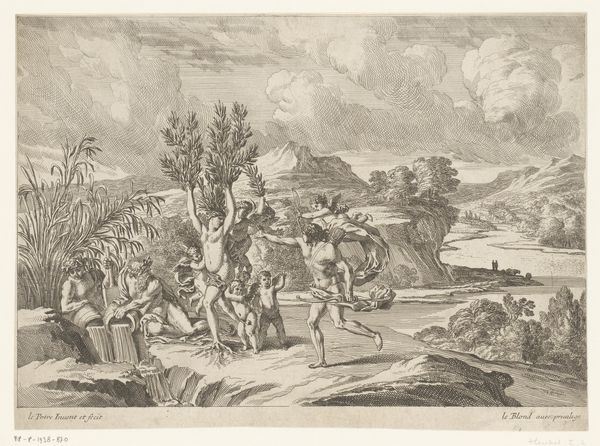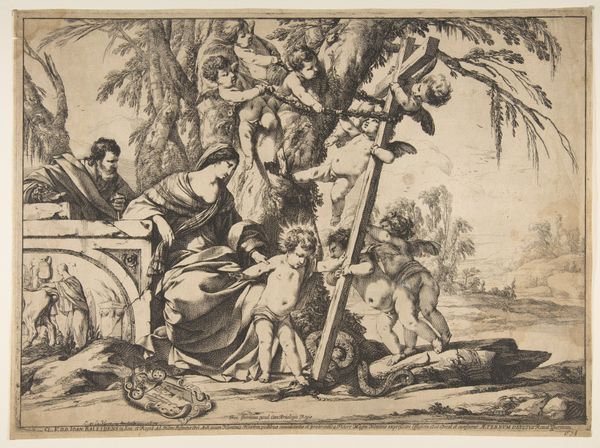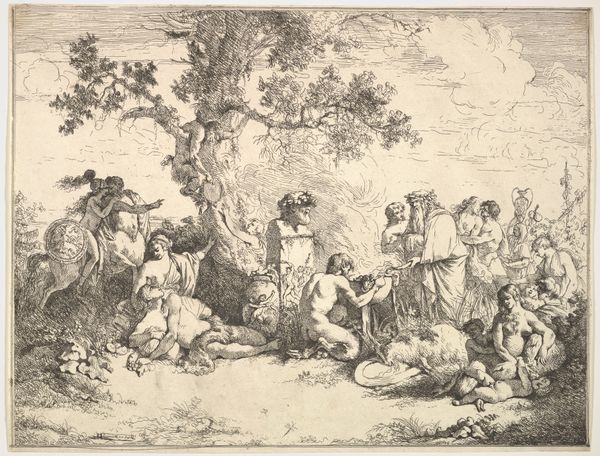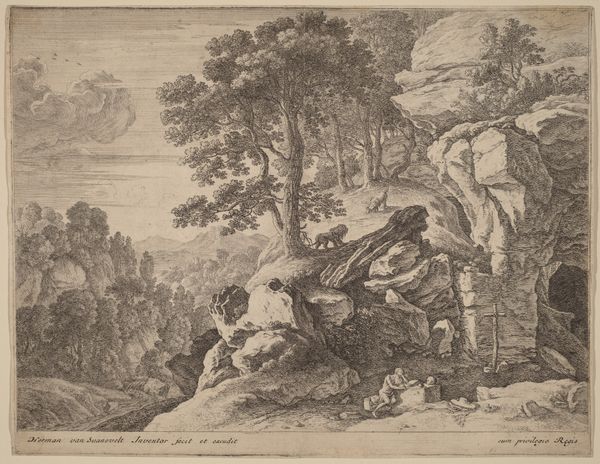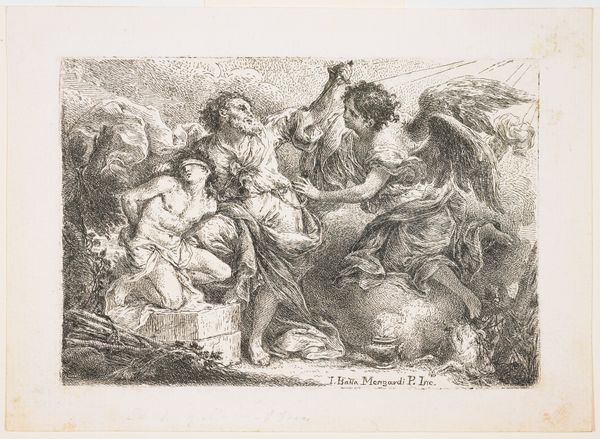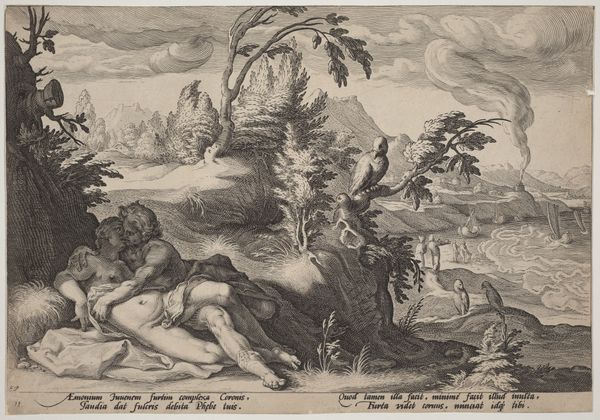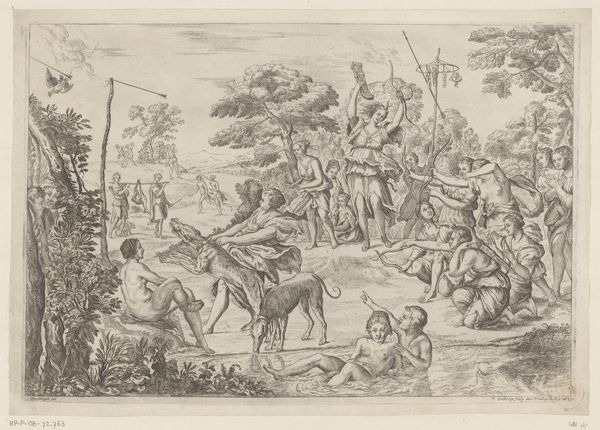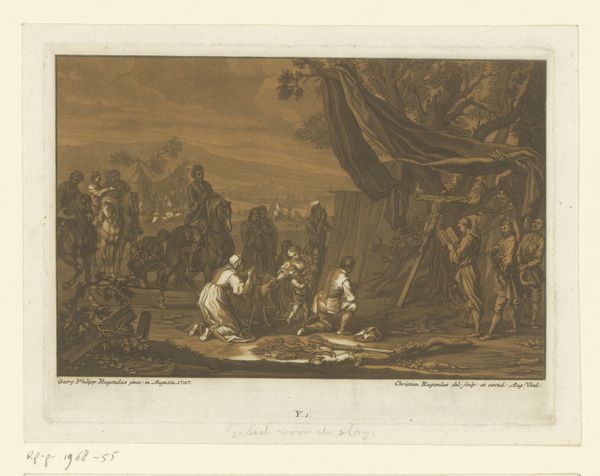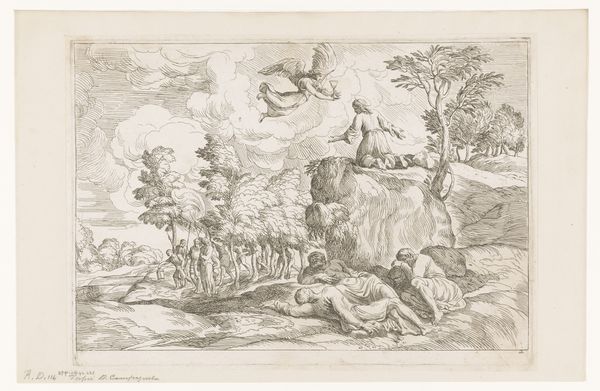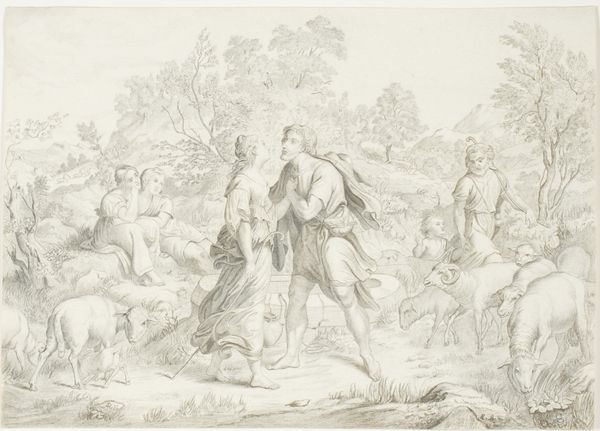
The shepherd Paris sitting on the right, holding a staff and handing an apple to Venus accompanied by two nymphs 1750 - 1790
0:00
0:00
Dimensions: Sheet (Trimmed): 18 7/8 × 15 3/16 in. (48 × 38.5 cm)
Copyright: Public Domain
Curator: Let's talk about this engraving, "The shepherd Paris sitting on the right, holding a staff and handing an apple to Venus accompanied by two nymphs," made between 1750 and 1790 by Jacopo Guarana. What strikes you about it initially? Editor: The figures, especially Venus and the nymphs, seem so idealized, very classical. It reminds me of the ways female figures are often represented as objects of beauty. What's the significance of this story being portrayed during that time? Curator: The Judgment of Paris was a very popular subject. Artists depicted it repeatedly. Why do you think that might be? Consider the rise of academies during this period. Editor: I see. Maybe it was seen as a way to show off artistic skill with the nude figure, linking back to classical ideals? It feels like an almost academic exercise. Curator: Precisely! And who typically commissioned these works? The Church? The monarchy? No. We're seeing a shift toward a market economy where art becomes a commodity for wealthy collectors who seek status and refinement. Do you notice how the composition seems almost staged, like a tableau? Editor: Now that you mention it, yes. The figures seem deliberately posed and their expressions seem…performative. Were artists making a conscious effort to appeal to certain tastes? Curator: Absolutely. Artists catered to the patrons' desires for depictions that were both erudite, drawing on classical narratives, and decorative, providing a visually pleasing experience. Consider how this differs from earlier religious commissions. This is the dawn of the art market, and Guarana is creating for it. Editor: I hadn't thought about it in terms of the market like that. Seeing it as a commentary on patronage changes my view. Curator: It allows you to see it as something much more than *just* another classical scene, right? Editor: Yes, definitely! It's fascinating to consider how economics shaped even the most seemingly timeless artistic themes.
Comments
No comments
Be the first to comment and join the conversation on the ultimate creative platform.
